What is an LED?
The superiority of Light Emitting Diodes (LEDs) in the world of illumination should not go unnoticed. An LED is a semiconductor device that releases visible light when a current is passed through it. In the last decade, many have made the switch from traditional incandescent or CFL bulbs to LEDs due to their numerous advantages:
- LEDs use less energy
- They are brighter
- Have a longer life span
- They are more cost-effective
- They are more energy efficient
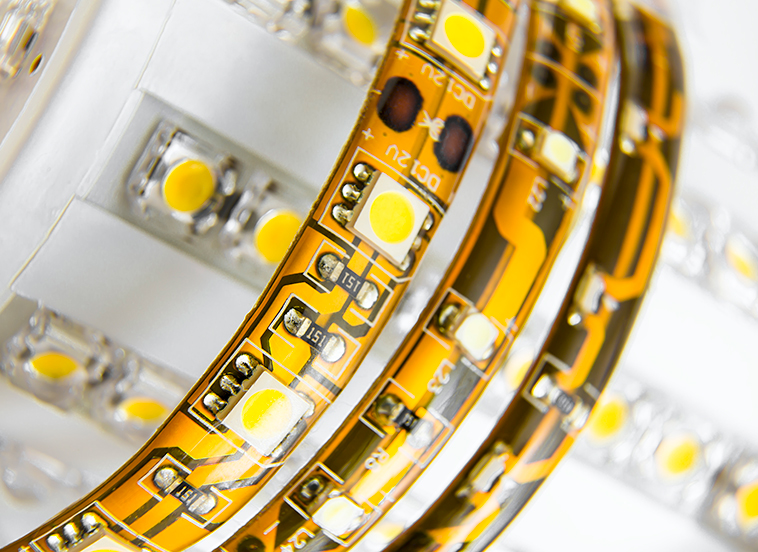
How Does It Work?
LEDs create light by electroluminescence in semi-conductive materials. But what does this mean?
In basic terms, light is created through a circuit due to the recombination of electrons in the diode. A diode is the simplest form of semi-conductor, and only lets current flow through in one direction. In an LED the diode contains sections of N-type semiconductor (negatively charged as there are extra electrons) connected to a P-type semiconductor (positively charged as there are missing electrons) with electrodes at the end.
When no voltage is running through the diode, the electrons can not pass through the junction between the positively and negatively charged sections (the P-N junction).
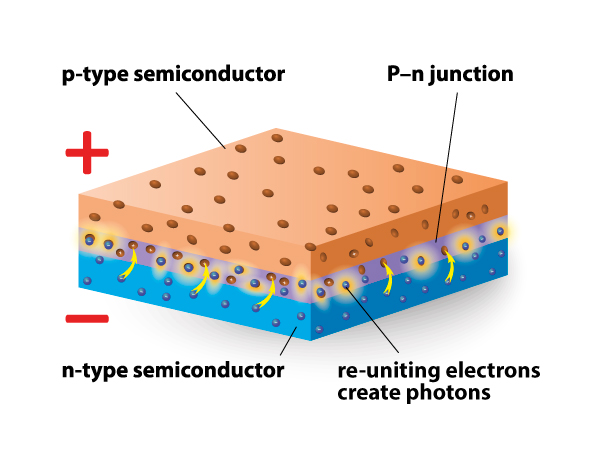
When a sufficient voltage is applied, the free electrons from the N-type conductor are drawn to the positive electrode, passing the P-N junction to fill the electron gaps. When electrons make this transition and join an atom which had previously been missing an electron, a photon (a particle of light energy) is released.
For the photon to be visible to humans, the diode must be made from specific materials. In an LED the semiconductors are made from silicon as this produces high frequency photons, which create light within the visible spectrum when a current is run through it. LEDs release a monochromatic (the same wavelength) source of light as all the photons emitted have the same energy level and frequency. Photons are only produced at the P-N junction of the diode, so only a narrow band of light is emitted. Therefore, one layer of semiconductor is made thin and transparent, so photons can escape easily, and the light can be useable to form an LED bulb.
Advantages of LEDs:
When compared to traditional incandescent lights, LEDs have numerous advantages and can be seen as the far better option for your lighting needs.
- LEDs are roughly 90% more efficient, than traditional bulbs. This is due to the way light is produced in both bulbs. Incandescent bulbs use a filament which gets very hot to “excite” the electrons to bump into each other and produce light. Whereas, LEDs do not use a filament and instead rely on an electrical current being passed through a semiconductor material. Incandescent bulbs only transform 5-10% of energy into light compared to LEDs where 90% of energy is converted into light. As LEDs do not waste energy as heat they can produce the same amount of light as traditional bulbs using less power.
- LEDs are also much safer. Incandescent bulbs can be considered a fire hazard as they can easily reach temperatures that exceed 200°C. Often incandescent bulbs start fires when they are in contact with flammable materials, due to the extreme temperatures reached. It is also common practice to match a fixture with an incandescent bulb that has a wattage that exceeds the limit of the fixture. This can cause the bulb to overheat, and often the fixture can catch on fire. LED bulbs will only heat to around 32°C and due to their low voltage it is hard to fit a lamp which does not match the rating of the fitting. LEDs also do not contain any toxic ingredients, such as mercury and argon vapor, which is present in incandescent bulbs and CFLs, which can be harmful to your health.
- LEDs are more environmentally friendly. Traditional bulbs contain toxic materials which can leech out and contaminate the environment in landfill sites, whereas LEDs do not contain these hazardous materials, that could damage the environment. LEDs have a much lower carbon footprint due to their lower power consumption, as well as having a longer-life span, which means bulbs are replaced less regularly and therefore create less waste.
- LEDs have a lower power consumption which can lead to considerable energy savings. LEDs on average consume 5-8 times less energy that incandescent bulbs.
- LEDs have a longer life than traditional bulbs. An incandescent lamp’s lifetime is approximately 1000 hours whereas max efficiency LEDs can last for 50,000 hours. The fact that LEDs are both energy efficient and have a long-life span has made them the most cost-effective option in the long-term, and this has been the driving force behind the switch to LEDs.
- LEDs come in a variety of colours. LEDs can produce any colour on the spectrum, making them completely customisable to your home.
- LED bulbs can be “smart”. This type of technology is becoming common place in many homes. With smart LED bulbs you can take advantage of controlling them from an app on your phone or with your other smart devices, like Alexa. You can turn your lights on and off, dim them, choose colours, sync to music and more. An extra chip is place inside the circuit of the LED to allow this functionality. LEDs can be smart due to their minimal heat output, which doesn’t damage the technology needed.
- LEDs offer superior light quality:
- Firstly, this is because they emit light in one direction. This means light does not go in unintended directions and so eliminates the need for reflectors which are used by traditional bulbs to redirect light.
- LEDs also have a very high Colour Rendering Index (CRI). This relates to the ability of showing the true colour of an object. Traditional incandescent bulbs produce a yellow depiction of objects, whereas LEDs can offer near precise immitation of natural light.
- LEDs can be dimmable as they can operate at any percentage of their rated power.
- LEDs are much brighter than incandescent bulbs, this is as they have a higher lumen to watt score. If you were to compare a 40W incandescent bulb with 40.5 W LED bulb, the difference in the number of lumens would be 3,550W.
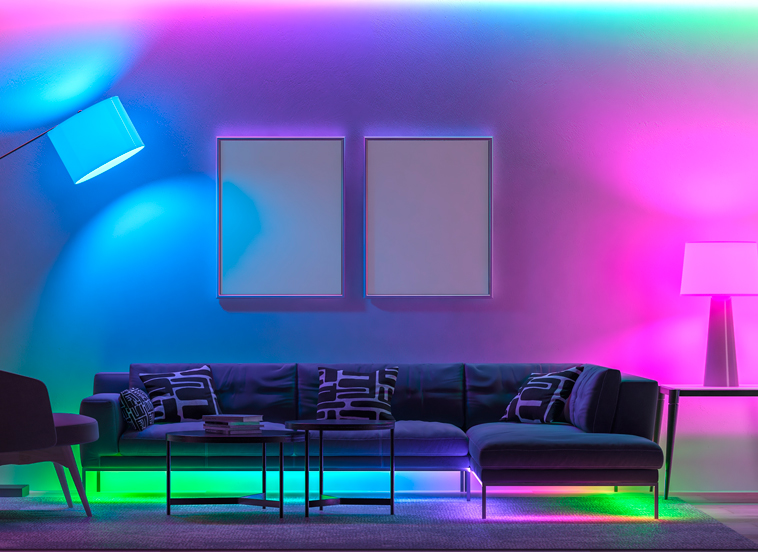
What is an LED?
The superiority of Light Emitting Diodes (LEDs) in the world of illumination should not go unnoticed. An LED is a semiconductor device that releases visible light when a current is passed through it. In the last decade, many have made the switch from traditional incandescent or CFL bulbs to LEDs due to their numerous advantages:
- LEDs use less energy
- They are brighter
- Have a longer life span
- They are more cost-effective
- They are more energy efficient

How Does It Work?
LEDs create light by electroluminescence in semi-conductive materials. But what does this mean?
In basic terms, light is created through a circuit due to the recombination of electrons in the diode. A diode is the simplest form of semi-conductor, and only lets current flow through in one direction. In an LED the diode contains sections of N-type semiconductor (negatively charged as there are extra electrons) connected to a P-type semiconductor (positively charged as there are missing electrons) with electrodes at the end.
When no voltage is running through the diode, the electrons can not pass through the junction between the positively and negatively charged sections (the P-N junction).

When a sufficient voltage is applied, the free electrons from the N-type conductor are drawn to the positive electrode, passing the P-N junction to fill the electron gaps. When electrons make this transition and join an atom which had previously been missing an electron, a photon (a particle of light energy) is released.
For the photon to be visible to humans, the diode must be made from specific materials. In an LED the semiconductors are made from silicon as this produces high frequency photons, which create light within the visible spectrum when a current is run through it. LEDs release a monochromatic (the same wavelength) source of light as all the photons emitted have the same energy level and frequency. Photons are only produced at the P-N junction of the diode, so only a narrow band of light is emitted. Therefore, one layer of semiconductor is made thin and transparent, so photons can escape easily, and the light can be useable to form an LED bulb.
Advantages of LEDs:
When compared to traditional incandescent lights, LEDs have numerous advantages and can be seen as the far better option for your lighting needs.
- LEDs are roughly 90% more efficient, than traditional bulbs. This is due to the way light is produced in both bulbs. Incandescent bulbs use a filament which gets very hot to “excite” the electrons to bump into each other and produce light. Whereas, LEDs do not use a filament and instead rely on an electrical current being passed through a semiconductor material. Incandescent bulbs only transform 5-10% of energy into light compared to LEDs where 90% of energy is converted into light. As LEDs do not waste energy as heat they can produce the same amount of light as traditional bulbs using less power.
- LEDs are also much safer. Incandescent bulbs can be considered a fire hazard as they can easily reach temperatures that exceed 200°C. Often incandescent bulbs start fires when they are in contact with flammable materials, due to the extreme temperatures reached. It is also common practice to match a fixture with an incandescent bulb that has a wattage that exceeds the limit of the fixture. This can cause the bulb to overheat, and often the fixture can catch on fire. LED bulbs will only heat to around 32°C and due to their low voltage it is hard to fit a lamp which does not match the rating of the fitting. LEDs also do not contain any toxic ingredients, such as mercury and argon vapor, which is present in incandescent bulbs and CFLs, which can be harmful to your health.
- LEDs are more environmentally friendly. Traditional bulbs contain toxic materials which can leech out and contaminate the environment in landfill sites, whereas LEDs do not contain these hazardous materials, that could damage the environment. LEDs have a much lower carbon footprint due to their lower power consumption, as well as having a longer-life span, which means bulbs are replaced less regularly and therefore create less waste.
- LEDs have a lower power consumption which can lead to considerable energy savings. LEDs on average consume 5-8 times less energy that incandescent bulbs.
- LEDs have a longer life than traditional bulbs. An incandescent lamp’s lifetime is approximately 1000 hours whereas max efficiency LEDs can last for 50,000 hours. The fact that LEDs are both energy efficient and have a long-life span has made them the most cost-effective option in the long-term, and this has been the driving force behind the switch to LEDs.
- LEDs come in a variety of colours. LEDs can produce any colour on the spectrum, making them completely customisable to your home.

- LED bulbs can be “smart”. This type of technology is becoming common place in many homes. With smart LED bulbs you can take advantage of controlling them from an app on your phone or with your other smart devices, like Alexa. You can turn your lights on and off, dim them, choose colours, sync to music and more. An extra chip is place inside the circuit of the LED to allow this functionality. LEDs can be smart due to their minimal heat output, which doesn’t damage the technology needed.
- LEDs offer superior light quality:
- Firstly, this is because they emit light in one direction. This means light does not go in unintended directions and so eliminates the need for reflectors which are used by traditional bulbs to redirect light.
- LEDs also have a very high Colour Rendering Index (CRI). This relates to the ability of showing the true colour of an object. Traditional incandescent bulbs produce a yellow depiction of objects, whereas LEDs can offer near precise immitation of natural light.
- LEDs can be dimmable as they can operate at any percentage of their rated power.
- LEDs are much brighter than incandescent bulbs, this is as they have a higher lumen to watt score. If you were to compare a 40W incandescent bulb with 40.5 W LED bulb, the difference in the number of lumens would be 3,550W.
Suggested Articles:
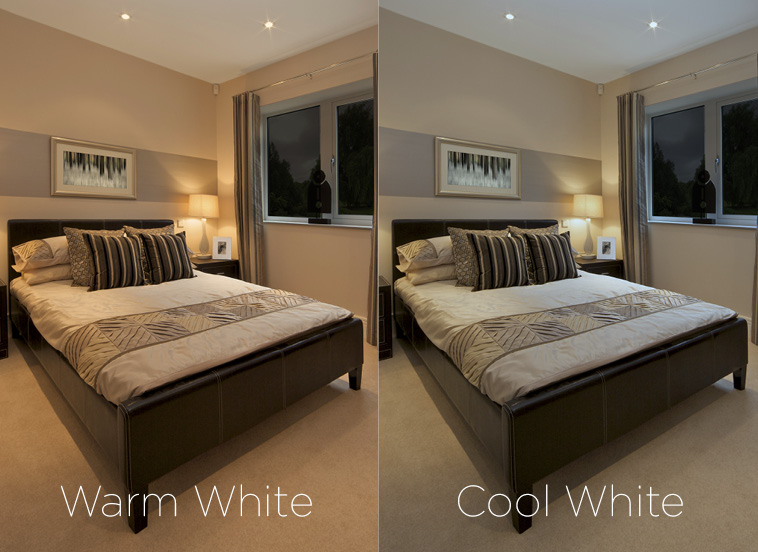
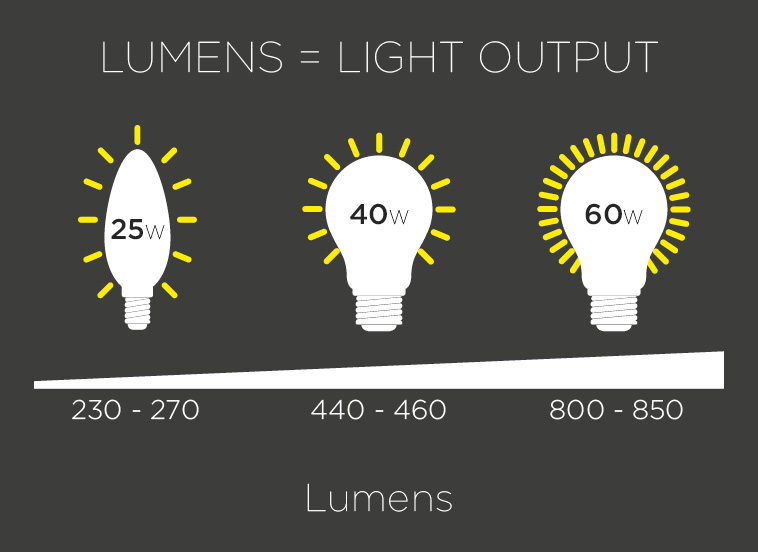
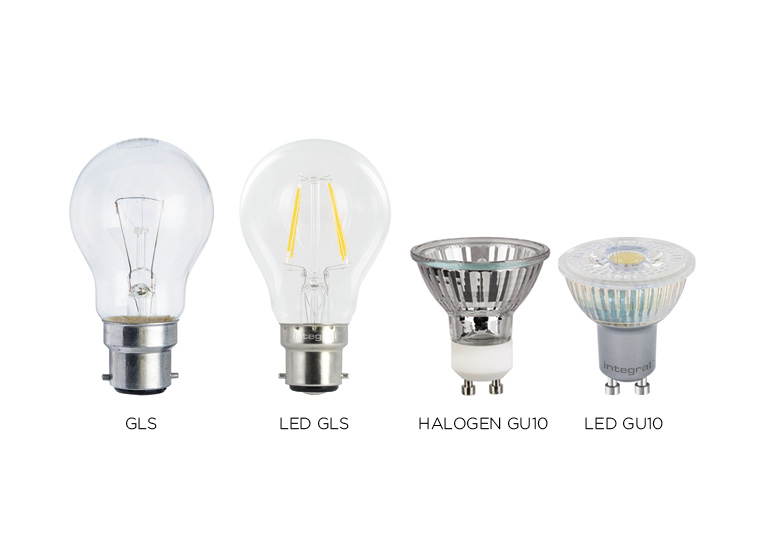
HIGHEST
QUALITY
COMPETITIVE
PRICES
EXPERTISE
EXTENSIVE
STOCK
NEWSLETTER
Sign-up to our newsletter and stay up to date with the latest product information and special offers.

